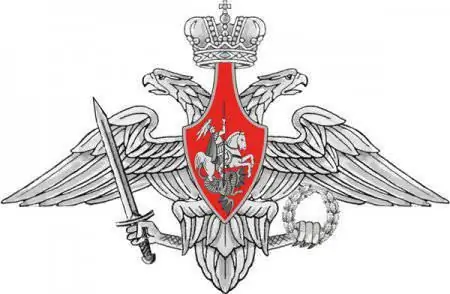- Author Matthew Elmers [email protected].
- Public 2023-12-16 21:49.
- Last modified 2025-01-24 09:17.

The Ministry of Defense intends to create operational-strategic commands (OSK) on the basis of the existing military districts by December 2010, which will control the four cardinal points.
Today, we recall that there are 6 military districts in Russia - Moscow, Leningrad, North Caucasian, Volga-Ural, Siberian and Far East. And now the troops stationed in their territories are proposed to be given under the control of four USCs.
OSK Zapad is planned to be formed on the basis of the Moscow and Leningrad military districts and the Baltic Fleet. Thus, the entire group of forces located in the northwestern strategic direction, occupying the territory from the borders with Belarus in the south to the Barents Sea in the north (26 regions), will be completely subordinate to the commander of the USC.
The rest of the USCs will be created in the same way. The "Vostok" will include the Far Eastern Military District, a number of formations from the neighboring Siberian Military District and the Pacific Fleet. USC Sever will include the Siberian Military District (excluding those units that are transferred to USC Vostok), the Northern Fleet and a part of the Volga-Ural Military District. In the southern strategic direction, the North Caucasian Military District, the Black Sea Fleet and the Caspian Flotilla will operate jointly.
The new system (if, of course, it is introduced) will solve the problem of centrally subordinated units - engineering brigades, which are subordinate to the chief of engineering troops, and units that are engaged in the protection and maintenance of arsenals under the direct control of the Main Missile and Artillery Directorate.
At the same time, the new initiative somewhat contradicts the idea, which has been promoted since 2008, of a transition to a three-tier command system (district - operational command - brigade). After all, in fact, the creation of a "supra-district" operational command is the creation of the fourth echelon, which means, whatever one may say, the complication of the command and control system, which in the course of the military reform and the creation of a new image of the army they were going to just simplify.
It must be assumed that the idea of a single operational-tactical command and control of different types of troops became especially relevant after the Georgian-South Ossetian conflict in August 2008, after the start of which it took time to set up coordinated actions of military units. But this does not mean that the structure relevant for the Caucasian direction will be just as appropriate, for example, in the northern strategic direction!
Konstantin Sivkov, First Vice-President of the Academy of Geopolitical Problems, talks about what will change in the Russian army after the introduction of the USC:
The conflict in South Ossetia has clearly shown that under the current system, when combat-ready units are assembled from all over Russia when a military operation is necessary, the USC is extremely necessary.






